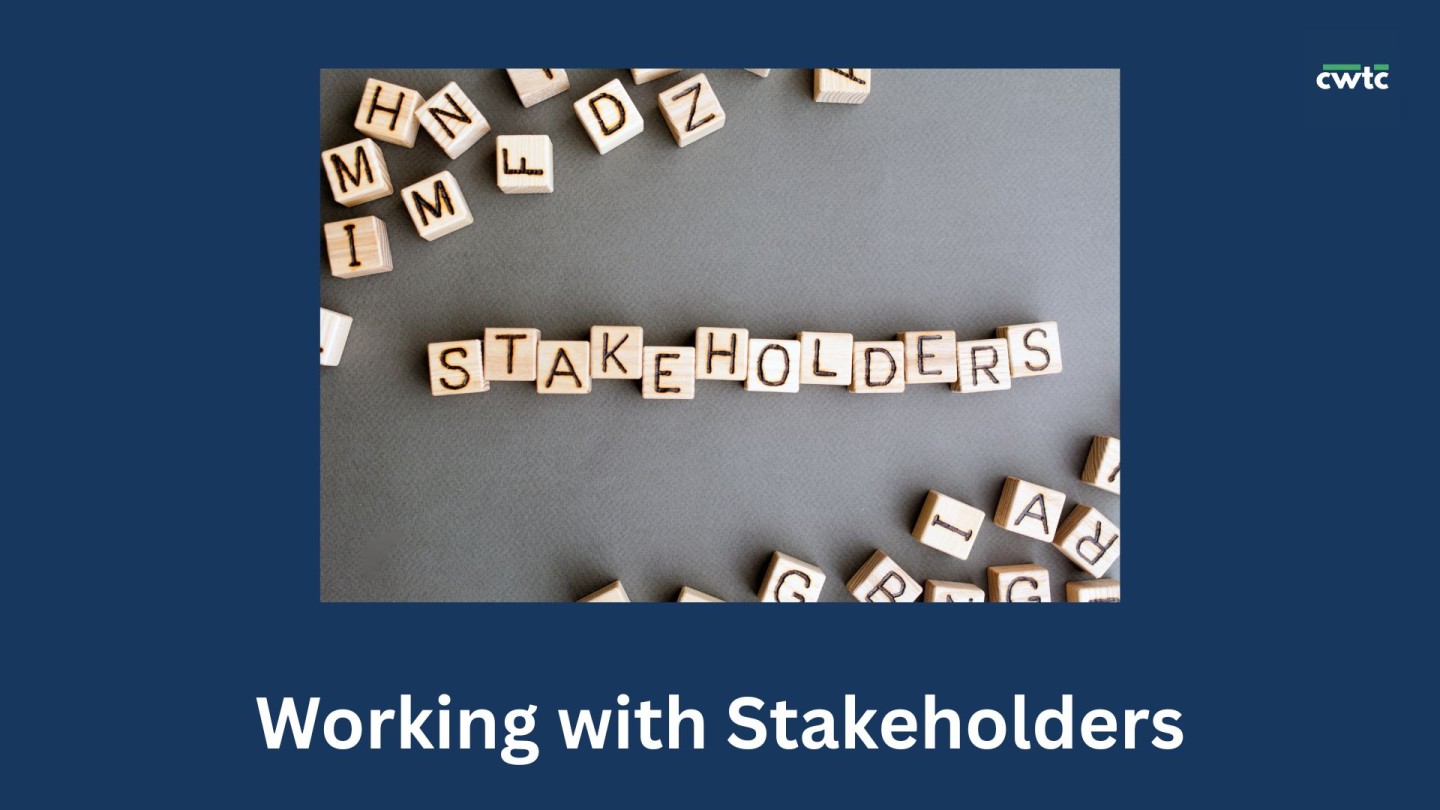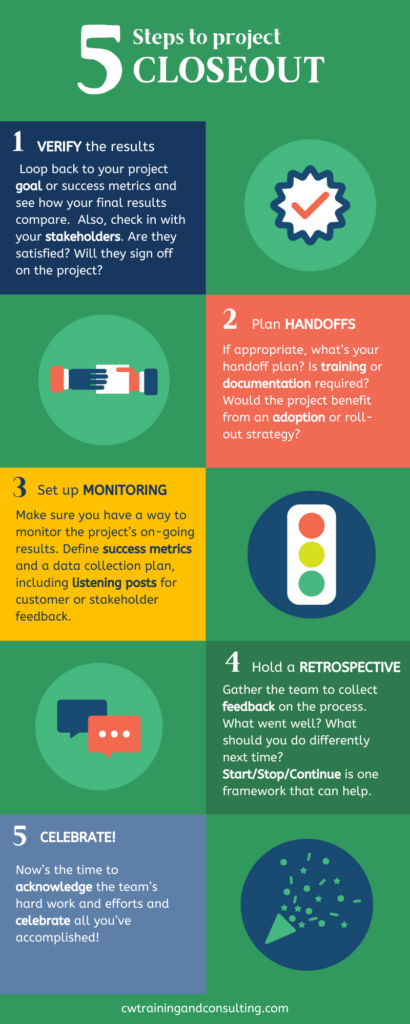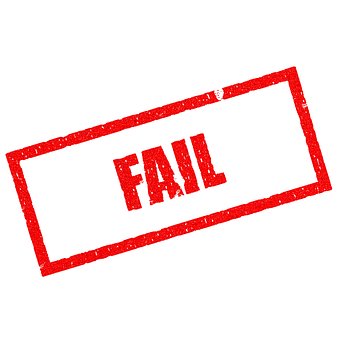The Stakeholder Engagement Pyramid, Power Grid, and Communication Plan are the three tools we live by as we navigate the management of our project stakeholders.


The Stakeholder Engagement Pyramid, Power Grid, and Communication Plan are the three tools we live by as we navigate the management of our project stakeholders.


One of the biggest frustrations I’ve experienced as a program manager is seeing my project get canceled. It’s painful to have put thought, time and energy into what I believed was an important initiative for the company, only to have it be deprioritized, defunded, and scrapped. Has this ever happened to you? And how can you protect your projects from project cancellation?
Some reasons for project cancellation are out of your control. Maybe the business environment has changed, or a competitor has moved into your domain. Perhaps the project was counting on a technical breakthrough that didn’t pan out or an external partner that couldn’t follow through.
On the other hand, some of the power is in your hands. Are you running the project effectively? For example, are the goals and vision of the project clear? Do you publish and meet most of your milestones? Listen effectively to your project team and keep your stakeholders up to date with progress and challenges? Manage risks, scope creep and budget constraints?
If you’ve got a good handle on the project execution, there still may be a risk of project cancellation. This can happen if the project is not aligned well with the overall priorities of the organization or if it’s competing with other projects that are more critical to business success. To determine the risk from this internal misalignment, ask yourself these three questions.
If there’s a list of prioritized projects, does your project appear on it, or contribute meaningfully to one that does? If you don’t have a clear idea of the strategic priorities of your organization, it’s absolutely worth your time to track it down. It may require a conversation with your manager, or the product or marketing manager in your domain. Understanding how your project contributes, and showing that tie to strategic objectives at every project review and conversation you have with stakeholders, will go a long way toward keeping your project prioritized and funded.
I once worked on a project that had a strong strategic tie to the company’s objectives of saving money in server hosting. However, no matter what I did, I couldn’t get the manager of a critical team to provide the people resources I needed to execute the project. The project soon fell apart, because no matter how strategic the work was, it could not succeed without the properly skilled people working on it. Without buy-in from the people who control your resources, your project is at risk. Get that buy-in, or raise the issue with your sponsor promptly. (You can read more about this project failure and what I learned from it in this blog article.)
Declining stakeholder support is a key risk factor. Your project sponsor may still be on board with your project, but everyone else may have started to doubt the business case, or the technical foundations, or just have moved on to the next business challenge. Keep your stakeholders informed, showcase successes, highlight that strong strategic alignment, and if you notice waning interest, ask about it. Enlist your sponsor in helping uncover the reasons for the declining support. It’s better to cancel the project quickly if the project is doomed than let it drag on wasting your team members’ time, energy and enthusiasm.
Project cancellations happen. Sometimes it’s the right thing, even if it’s painful. Ask yourself these three questions regarding your projects and you’ll have a better sense of the risk of cancellation. You can either shore things up or move decisively to cancel it.
If you enjoyed these tips, sign up for our newsletter and don’t miss a future post or learning event announcement.
CW Training and Consulting specializes in hands-on, interactive project management workshops - either off the shelf or customized to your needs. Contact Us and we will help you find the right learning solution for you and your business.
I’ve worked at Fortune 500 companies that took months to plan their next year, debating over how to prioritize multiple projects. Did those plans stick? Of course not. We would start the year in a perfect symphony of tactics aligned to strategy from the CEO’s office down to the front line managers. As time passed, recommendations of “Tiger Teams,” market shifts and project learning would result in justifiable shifts in project priorities.
I’ve also worked at startups where it felt like strategy shifted weekly, impacting project priorities along with the strategy changes. Maybe a large customer comes in with product demands or a strategy fails to bring in revenue. Pivoting is good but the cascading effect on marketing, operations and finance sends those teams into a stress ball of spin.
So where’s the middle ground for front line teams executing a shifting strategy that impacts how you prioritize multiple projects? How do you start out 2025 with a clear yet flexible plan for your projects? I do it by putting my program management skills to work.
It’s common practice for Program Managers to prioritize projects with a running list of projects or initiatives for their client teams. This is useful for resource allocation and as an input to on-going assessment of projects against goals. Jenny and I carry this practice over to our partnership and any gigs we lead as program managers.
I use this Project Prioritization Template as a starting point for stack ranking projects. It's meant to be strategic, creating a framework to help decide which projects to resource and whether you’re working on the “right” stuff. The key is to relate your projects to your strategic priorities. If a project isn’t aligned to your priorities, drop it from your list.
Here’s an example of a project priorities list you might have for a marketing team:
Your Project Priorities List should be a living document! Of course, priorities to shift as the organization learns so I create operating mechanisms to prioritize projects on a regular basis. These aren’t in depth project reviews, but Priority Reviews. You'll want to make sure the right people participate in the review - those who can add value and can help decide whether to add, subtract, or re-prioritize projects.
Time your Priority Reviews based on the time horizon of the projects and organization culture. Marketing teams may meet more frequently as they learn from customers and the market. Product teams may meet less frequently. Make sure the review is useful!
You’ll be well-positioned to start 2025 strong and achieve your goals by creating a prioritization framework that helps your prioritize multiple projects. Use it to maintain, review and adjust throughout the year. The key is to be intentional, flexible, and open to learning and adapting along the way.
Find this and other free templates in the at cwtrainingandconsulting.com and if you enjoyed these tips, sign up for our newsletter and don’t miss a future post or learning event announcement.
CW Training and Consulting specializes in hands-on, interactive project management workshops - either off the shelf or customized to your needs. Contact Us and we will help you find the right learning solution for you and your business.
We love to apply project management concepts to everyday life. As we often say, “Life’s a Project!”. As we launch a new year, you might take a moment to do a "project closeout" on 2024, whether you’ve got a specific project in mind, or just general work effort, or even your personal life. How was the year? Did you accomplish what you set out to do? What did you learn along the way?
We like to borrow from the Project Closeout phase of project management for help in thinking through these questions. Maybe it can be helpful to you too!

Find this and other free resources at cwtrainingandconsulting.com and if you enjoyed these tips, sign up for our newsletter so you don’t miss a future post or learning event announcement.
CW Training and Consulting specializes in hands-on, interactive project management skills boosting workshops - either off the shelf or customized to your needs. Contact Us and we will help you find the right learning solution for you and your business.

Do you find yourself managing projects when your primary role isn’t formally “project manager”? At work, it could be a new accounting system, marketing effort, or new process. At home, it could be a vacation, a group outing, or building a shed like I did recently. It was as much a project as anything I was doing at work. This is all Project Management.
Regardless of its scope or formality, your project has a higher likelihood of success if you apply these five key principles to your efforts.
Principle 1: Define What You’re Doing
Anyone who invests time or money in the project should understand the project and its scope to prevent roadblocks or disagreements down the road. I briefly define my projects in two or three sentences. For example, "My car doesn’t fit in my garage because my bicycles and tools are taking up too much space. I’m building a shed in my backyard so that I can both store my toys and park my car." I like to use "so that" in my project definitions as part of the justification. For more formal projects, I create a one-page Project Charter that includes other key information. This is something very common in project management. In fact, it's so important, we have self-paced course, walking you through it.
Principle 2: Know Your Stakeholders
In the project management world, we call anyone impacted by project outcomes “stakeholders.” Some may know they’re impacted while others may not. The latter group might catch you by surprise later with their opinions and needs, so you want to tease them out and share your project definition as early as possible.
I use a Stakeholder List to get input on stakeholders and build communication plans. Don’t forget the often-forgotten support teams like legal, finance, or customer success! The earlier you involve them the better in my experience (even if it’s a courtesy heads-up).
For my shed project, it was obvious that my spouse and the builder cared about the shed. However, did I think about potential neighbor concerns about noise or views? Would my children complain about moving their bicycles to the back? I spoke to them early to understand their concerns and get their buy-in up front.
Principle 3: Guesstimate the Timeline
Many factors go into estimating the time to complete a project (all of which are likely to change over time). The first trick is to define tasks at the broadest level that’s understandable yet not too difficult to estimate. When I feel good about the task definition and time guesstimate, I then consider dependencies by asking myself, “Are there deliverables from others that could impact my project tasks?”
In a home project like building a shed, estimating the task time may not seem like a big deal. However, it might be if you live in a stormy climate. How long will it take to order construction materials? To build the foundation and the structure? Is the contractor available if you're not building it yourself? Will you be done before the first rains?
It's become more and more acceptable not to create exact time estimates for projects. In fact, it’s often unrealistic. However, in my view, it’s worth the effort to sketch out the broadest level of tasks, guesstimate the time to complete them, and understand the dependencies at the outset. Your stakeholders will appreciate it.
Principle 4: Drive Decisions Effectively
I’ve learned that decision-making is the single most important aspect of a successful project. It’s what throws many projects off course. Keep tabs on what major decisions need to be made and who is ultimately making those project decisions.
I keep an ongoing list of open questions and decisions for my projects. Some clients use a decision-making process that includes role frameworks such as DACI (Driver/Approver/Contributor/Informed) to guide particularly complex decisions. Even if you’re not this formal, I always recommend identifying who needs to be involved and who’s making the decision. Choose a framework that fits the culture and needs of your team and decision-makers.
My shed project had many decisions and questions. I didn’t really care about the design decisions. As long as it fit in the space we allocated, my spouse was in charge of the design. However, I cared about the spend, so we both needed to approve the expenses. We agreed to this before we began.
Principle 5: Be Flexible During Execution
One of the greatest gifts of the Agile software-development movement is the idea of a flexible mindset. Unless you’re leading a project with well-known milestones and tasks, it’s highly likely that your project will evolve over time. More important than a plan that you stick to is a plan that can respond to change.
Good project managers create “operating mechanisms” to anticipate and respond to the unexpected. They’ll have a value-added check-in rhythm and real-time risk assessment tools ready to catch and manage issues.
While we had a good plan for the shed project, we ran into unexpected rocks under the surface that required different tools and effort. Yep, that took more time and labor than we had anticipated. Luckily, we built a schedule buffer and completed it before the rains!
Start Now and Learn More
Whether you write them down or just think about them, couple these five principles with excellent communication and I promise you will be on the path to project success.
If you enjoyed these tips, sign up for our newsletter so you don’t miss a future post or learning event announcement.
CW Training and Consulting specializes in hands-on, interactive project management skills boosting workshops - either off the shelf or customized to your needs. Contact Us and we will help you find the right learning solution for you and your business.

According to layoffs.fyi over 142,000 U.S. employees lost their jobs so far in 2022 and it is climbing every day. Crunchbase News estimates that over 85,000 of them are in the U.S. tech sector as of today (the links are updated - click through for current estimates). This may be a first major downturn for some. For others of us we look at each other and say, “here we go again.”
As the impacts of layoffs hit, typically the workload of those remaining increases. Many companies make efforts to prioritize, but as we saw from the whiplash of firing and hiring at Twitter (as a hyperbolic example), reality does not often match theory. Layoffs are often tied to reorgs and uncertainty. Flush off a full employment economy, “the great resignation” and summer of “quiet quitting,” it may feel like the idea of a balanced life was a blip.
This is the time to be ruthlessly efficient with your choices. There’s no reason to pull late nights or eat at your desk. You deserve a balanced life.
Push back on your manager and their manager. Push back on yourself (if you’re one of those people who find it difficult to say no). I used to prepare for these types of talks with my manager by creating a list of my priorities and literally “drawing the line” of what I could and could not realistically accomplish in a given time period.
Another way to prioritize is to make it practice to ask for input on whether something should be traded…not added when someone asks you to help them out.
This can be particularly difficult when you’re in a cross-functional role. How frustrating can it be when you depend on someone who is not in your direct work group and they follow my advice? This is the time to tie your needs to the strategy and priorities of the organization as whole.
We lifelong project managers joke that “life is a project.” Right?! Make the up front investment of time to plan out your deliverables so you have a realistic view of what it’s going to take. Don’t stop at estimating how much of your time it may take, but also include people you will depend on from your team and other teams.
What if you have unknowns? Put placeholders in. The goal is to have a sense of the big picture. Across all of your priorities and not to get caught up in the minutia of planning.
Be ruthless about your meeting choices. If you’re asked to attend a meeting, ask yourself if you’re adding value? If not, decline. Can someone else represent you? If so, decline. Can you provide feedback through an asynchronous document? If so, propose it! If live collaboration is critical, then keep the meeting.
If you are creating a meeting, keep the invitation to those who add value. If someone wants to join you to stay in the know, record the meeting or take summary notes that you can share afterwards.
It’s easy to get distracted by Slack, texts, emails and the like. Block time for meeting free, heads down time to focus. I turn off all non-critical notifications and set aside time to scan and catch up later.
You might even choose a channel for truly urgent requests. For example, you could use Slack for everyday comms and train people to use your cell phone for urgent texts. Let them know you’ll be out of pocket.
One last thing - I like to acknowledge receipt of information, but really. Do you need to? if there's action required, take and and don't file it for later. That helps you and reassures the requestor.
There's nothing better than taking a move break, even if it's a short walk around the block (or the office/house if the weather isn’t cooperative). Fresh air does a body and a mind good. You’ll be sharper when you return to your desk, I promise.
I'm not making this up. Many studies have shown that walking boosts creativity. Check out this one from Stanford University, which found that “A person's creative output increased by an average of 60 percent when walking.” I’m a biker and I get all kinds of creative ideas when out on the road by myself.

I love efficiency and could go on and on, but 5 seems like a nice round number. Pick a one or two to try over the next week and see if it works for you. Maybe even come up with a few of your own or chat with some co-workers about what they’re doing to stay sane.
Bottom line? Be strong! Be careful with your commitments! Protect that vibe of a balanced life. You deserve it. #worklifebalance #balancedlife

You may have read articles on how good project communication is critical to project success. So what is good communication? Here are our best tips to help you become an expert communicator on your project. Some of them even apply in life!
1. Be clear and direct.
There’s nothing more frustrating for your listener than vague language and rambling. Know that sometimes your message may be difficult to hear, but softening the message too much doesn’t help. What helps is being clear and direct with facts, requests, and consequences. If you’re asking someone to work the weekend, make a direct request (“If you and I work this weekend, we can bring in the date. Are you able to do that?”) instead of a vague statement (“I wonder if there’s anything we can do to help bring in the date”). There’s an added benefit that you’re more likely to get a clear, direct response, too.
Describe the project status or a newly discovered issue from more than just your perspective. Address what your stakeholders care about and what their worries might be, including relevant context, and use specific, straightforward language — not jargon. If you’re sharing the news that your project date is slipping, your manager or sponsor will want to know that you understand why it happened and how you will prevent it from happening again. The same goes for good news. Show that you understand the why.
Even if your project is small or doesn’t impact many people, it’s worth your time to identify whom you’ll communicate to and the communication types, channels, and frequencies you’ll use. Your core working team might meet weekly and also have a Slack channel for quick questions and updates. The rest of your stakeholders might benefit from a monthly email update that you post on your project web page, too. And if you’re new to the company or the role, it’s worth checking around for standard communication tools and processes. You may not have to reinvent the wheel!
If you have a project sponsor, take the time to learn their style and preferences for project communication. Hands-on or hands-off? Slack or phone calls? Lots of detail or just a summary and specific asks? Your project sponsor is your best ally in setting you up for success, addressing any challenges, and ensuring project follow-through, so get to know them well.
When there are challenges, describe what has to change through the lens of the process rather than making it personal. For example, instead of making it about you and a teammate (“Why didn’t you tell us you were running late? Did you think we didn’t need to know?”), focus on why being late is a problem, letting the process do the talking (“As a downstream partner, my team is impacted by this project, so we’d like to know as soon as you know that the project has slipped. Can you include us in your communications?”).
If it fits with your style, find ways to infuse a little humor into your project communications. It’ll go a long way to reducing stress, both yours and your audience’s, and makes the work environment a little more pleasant. Ask at least one other person to review your humor for appropriateness, though, and know your company’s culture so you don’t go overboard.
That’s it! Do these six tips for effective project communication consistently and your projects will run more smoothly. Here’s to great success!
Find this and other free resources at cwtrainingandconsulting.com and if you enjoyed these tips, sign up for our newsletter so you don’t miss a future post or learning event announcement.
CW Training and Consulting specializes in hands-on, interactive project management skills boosting workshops - either off the shelf or customized to your needs. Contact Us and we will help you find the right learning solution for you and your business.
A number of years ago, while working at a large, successful software company, I took on the role of project leader for what I expected to be a fun, challenging, high-value-add technology project. My sponsors for the project were the chief technology officer and the chief information officer, and the effort was going to save the company $35M in cost avoidance. The technical challenge (untangling a root-ball of legacy web servers and upgrading or decommissioning each one) was the nut to crack, I told myself. With sponsorship from the top and an undeniably strong business case, I blithely sailed into the project.
 You know what's coming, right? Things didn't go as I expected. Two things saved the project from being an unmitigated disaster: first, it was cancelled while still in the early planning phase, and second, I was able to learn some very important lessons about project management, and about life. In case they might be helpful to you too, here they are.
You know what's coming, right? Things didn't go as I expected. Two things saved the project from being an unmitigated disaster: first, it was cancelled while still in the early planning phase, and second, I was able to learn some very important lessons about project management, and about life. In case they might be helpful to you too, here they are.
The first sign that things weren't going to go smoothly was when my key partner, who was in another organization, didn't engage. He didn't respond to emails, he didn't return phone calls, he cancelled meetings. Then, he told me point blank that "the project isn't a priority for my team". But, but but... I sputtered in my head. Your executive is a sponsor! Of course it's a priority, because your sponsor said so! Lesson number one: Do your own stakeholder analysis, even if you think the sponsor has already smoothed the way. Get to know your key players early in the project and learn what's important to them. I might have saved us all significant grief if I had done so.
Lesson number two came swiftly on the heels of lesson number one: It's never too early to do a risk assessment. Because my initial judgment was that the technical arena was going to be the biggest challenge, I planned risk assessment after the high-level technical plan was in place. And yet, if I had taken a look at the broader project landscape and noted that partner engagement was a critical success factor, I might have done that stakeholder analysis I missed, and therefore been alerted to escalate sooner and with more success.
And speaking of escalation, my third lesson was Escalate with facts. I held back from bringing executive leadership into the conflict because I feared making my partner look bad (he wasn't following his exec's lead, after all), and making myself look unskilled (how come I can't persuade effectively?). I got hung up in the emotion of it, rather than staying neutral and simply reporting on results: emails and phone calls not returned, meetings missed.
What I didn't know at the time, even though my partner's "it's not a priority" comment should have clued me in, was that his organization was working through the growing pains of being in high demand and under-staffed. His leadership hadn't yet put in place a functional prioritization mechanism, and my project happened to be something the execs wanted but the rank-and-file couldn't deliver. Hence the fourth lesson: Keep the big picture in mind. It's not always about your project; in this case, my project and its difficulty getting traction put a spotlight on a major business process gap. From a bigger picture perspective, my project's failure was an important step in the maturation of the company; a success!
And finally, when the project was cancelled and I felt responsible and upset, I had the opportunity to learn one last lesson: Don't take it personally. Sure, there were things I could have done to have failed faster, with less wasted time and political capital, but in the end, I did my best with what I knew at the time. The sad truth is that projects don't always succeed. My project's failure did not mean I was a failure. It meant I was in there trying and learning, and isn't that what life's really all about?
What lessons have you learned from project failures? I'd love to hear your stories in the comments below.
If you enjoyed these tips, sign up for CTWTC’s newsletter and don’t miss a future post or learning event announcement. CW Training and Consulting specializes in hands-on, interactive project management workshops - either off the shelf or customized to your needs.

Copyright 2025 CWTC © All Rights Reserved